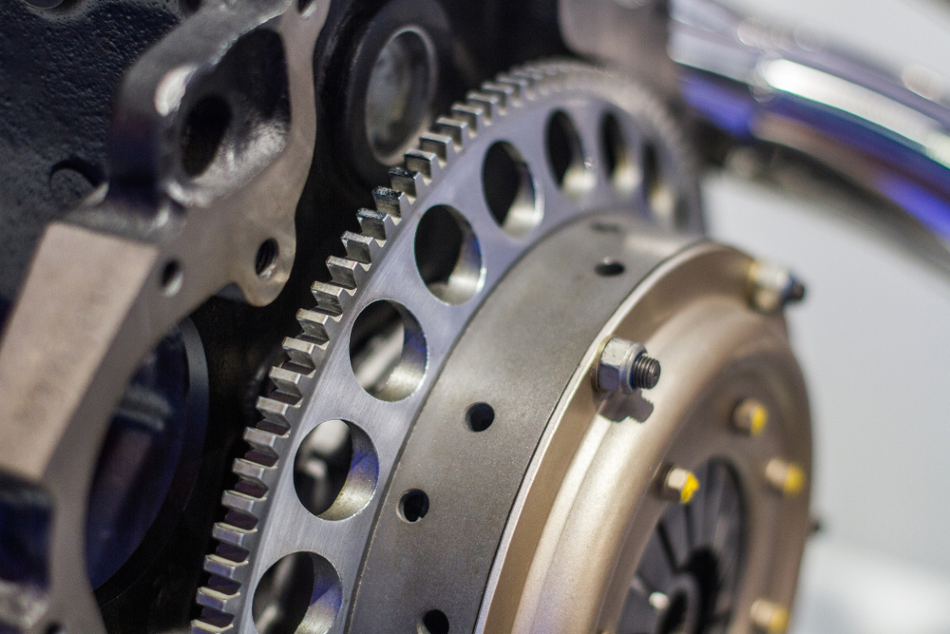
Image Credit: Oleksandr Sokurenko/Shutterstock.com
Clean energy resources, such as wind and solar, hold untold promise for a more sustainable energy future, but a big problem with these and other clean energy resources is their intermittent nature: The wind doesn’t always blow, and it doesn’t always blow with the same force.
A range of next-generation energy storage systems has emerged to address this issue, including compressed air energy storage (CAES) and flywheel energy storage systems. While these two energy storage systems are proven to be effective on their own, some research has shown they can be even more effective when combined.
Used since the 19th century, CAES systems take energy and use it to pump air or another gas into an underground cavern or airtight container, causing it to become compressed. When a situation calls for energy to be released, the compressed air is released to drive a generator, which produces electricity.
While CAES systems store potential energy, flywheel storage systems store kinetic energy. A flywheel system takes energy and uses it to increase the rotational motion of a revolving object known as a rotor. A flywheel storage system can conserve energy because its rotor revolves in an almost frictionless vacuum. The rotor is attached to the shaft of a generator, and when power is needed, the spinning rotor is used to drive the generator.
Thermal and Compressed Air Storage (TACAS)
Thermal and Compressed Air Storage (TACAS) is one energy storage system that combines compressed air and flywheel technology. Developed by a company called Active Power, TACAS leverages each storage system in such a way that each one compliments the other.
CAES can supply long backup times and has verified reliability. A primary constraint on CAES technology is its lethargic dynamic response. The start-up of a CAES system takes 1 or 2 seconds, which would not be enough in backup power systems.
To make up for this restriction, Active Power attached a flywheel system to their CAES. The flywheel supplies 3 to 4 seconds of energy, while the long-term CAES system ramps up. The TACAS system developed by Active Power has a base unit that incorporates multiple subsystems, except for air storage tanks, which are in an independent base unit.
As indicated by the name, TACAS also uses a thermal energy storage approach. While CAES is plagued by low energy density, sluggish response times and storage demands, thermal energy storage can provide long backup times and high energy density. Like CAES, thermal energy storage is safe for the environment.
Why a Mix of Thermal and CAES Helps Address Storage System Disadvantages
Active Power found that a blend of thermal and CAES could address the disadvantages of each storage system. The TACAS system utilizes a small compressor to charge an array of compressed air cylinders and electrically heat a block of steel with airflow holes. To discharge energy, compressed air released by the cylinders passes through the heated steel, which passes its thermal energy to the moving air. The fast-moving, heated air then drives a turbine to produce electricity. The system then converts the generator's AC output into DC via an internal power supply.
One major bottleneck in the system is that it 24 to 30 hours to recharge the air tanks with compressed air. By comparison, a battery used in a comparable power storage system can recharge to around 80% capacity in less than 8 hours.
The lengthy recharge time in the Active Power system is a product of design decisions made to hit size and cost objectives. A bigger, stronger compressor could cut the lengthy recharge time but result in a bigger footprint and greater financial cost.
Even though the system has a longer recharge period, the TACAS system offers a steadier state of charge than battery storage. Normally, batteries experience considerable deterioration in capacity over time. However, with thermal and CAES, there is no degradation in capacity.
References and Further Reading
https://energystorage.org/why-energy-storage/technologies/mechanical-energy-storage/
https://www.powerelectronics.com/content/leveraging-thermal-and-compressed-air-energy-storage
Disclaimer: The views expressed here are those of the author expressed in their private capacity and do not necessarily represent the views of AZoM.com Limited T/A AZoNetwork the owner and operator of this website. This disclaimer forms part of the Terms and conditions of use of this website.